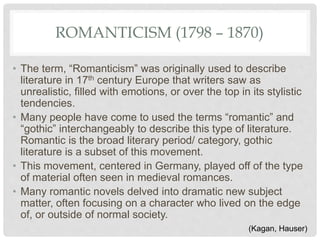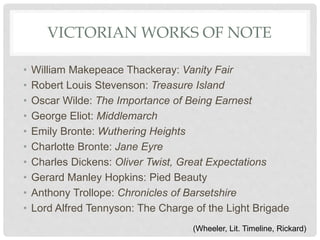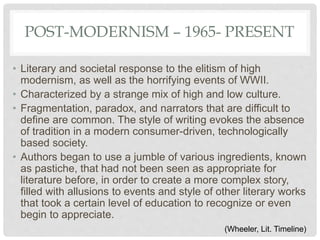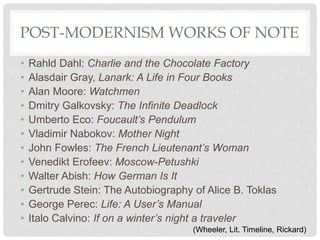The document provides an overview of the key periods in European literature, detailing their characteristics, notable authors, and seminal works. It covers the Renaissance, Enlightenment, Romanticism, Realism/Naturalism, Victorian period, Modernism, and Post-Modernism, highlighting the evolution of themes and styles across these periods. Each section outlines significant literary movements and influential thinkers that shaped European literary traditions from the 1400s to the present.





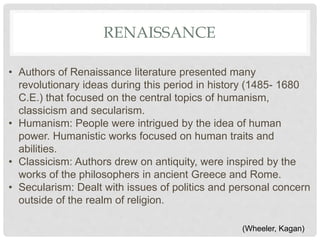

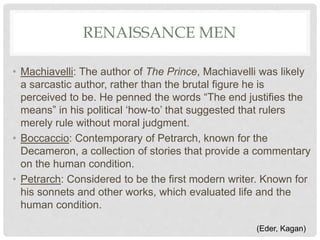


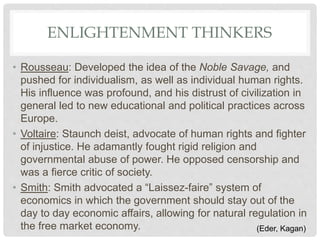
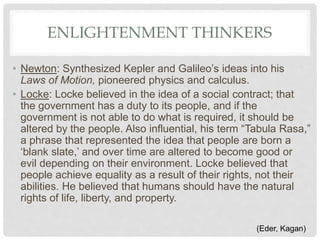

![IMPORTANT ENLIGHTENMENT QUOTES
• “Man is born free, but everywhere he is in chains” -Rousseau
• “Cogito ergo sum” (“I think; therefore I am”)-Descartes
• “Knowledge is power” - Bacon
• "Freedom is a gift from heaven, and every individual of the same
species has the right to enjoy it as soon as he is in enjoyment of
his reason.“- Diderot
• “I disapprove of what you say, but I will defend to the death your
right to say it.”- Voltaire
• “No one ought to harm another in his life, health, liberty or
possessions”- Locke
• “When America, the Negro countries…and so forth were
discovered, they were to them [the Europeans], countries
belonging to no one, since they counted the inhabitants as
nothing.”- Kant
(Eder, Kagan)](https://image.slidesharecdn.com/brittanyaves-literature-221113092214-41011d4a/85/literature-pptx-14-320.jpg)
